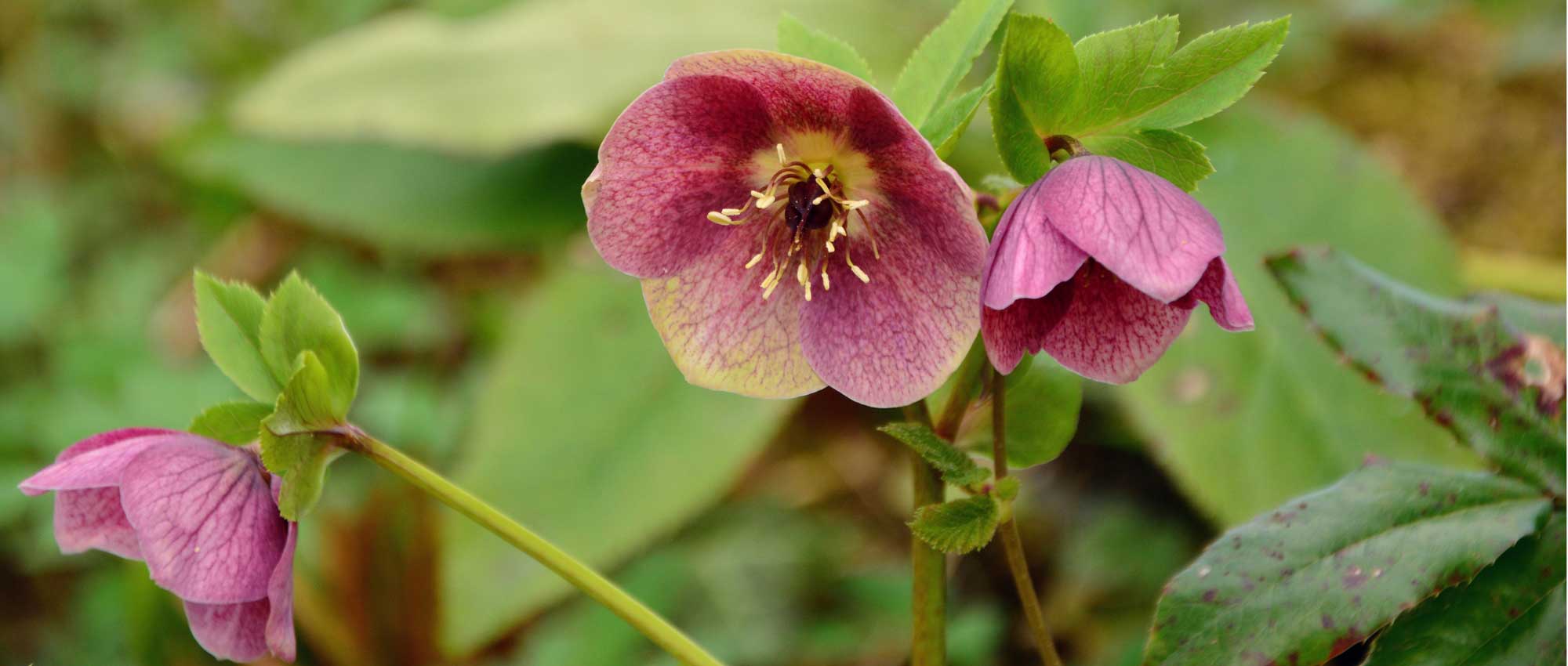
Hellebore or Christmas rose: which variety to choose?
Find the variety suited to your situation!
Contents
The Hellebore is a perennial plant that offers a stunning flowering display in the middle of winter, when the garden is particularly lacking in colour. But how do you navigate between the earliest varieties, which bloom as early as November, and the later ones, at the end of winter? Between the brightest and most sophisticated flowers or the more discreet and understated ones? How do you choose the most suitable hellebore for your situation and desires? Follow our tips to find the right plant among all the existing varieties!
For what type of soil?
To ensure your hellebore thrives and settles easily in your garden, consider the nature of the soil and the exposure (sun or partial shade).
- In acidic soil
If the pH of your soil is low (low pH <6.5), choose the Christmas Rose (Helleborus orientalis). There are many hybrids with varied colours and even varieties with double flowers. It blooms in late winter, often in shades of white, pink, red, or purple. However, absolutely avoid planting the Christmas Rose: it cannot tolerate overly acidic soils.
You can pair your Oriental Hellebores with winter heathers, such as Erica x darleyensis, which also bloom in winter and enjoy acidic conditions.
- In calcareous soil
If your soil is calcareous (high pH > 7.5), opt for the stinking hellebore. It thrives in calcareous conditions and can also grow in neutral soils. From February onwards, it bears discreet green flowers with purple-edged petals. Its foliage is dark green, quite fine, and deeply cut.
- In dry soil
If your soil is dry and stony, plant Corsican Hellebores (Helleborus argutifolius). Native to Corsica and Sardinia, they seem better adapted to drought than other species. They have cream-white flowers and beautiful broad, dentate foliage. Helleborus x sternii, a cross between the Corsican Hellebore and the Majorcan Hellebore, also grows quite well in dry conditions. It bears green flowers that are more or less pinkish. The stinking hellebore also enjoys dry, stony soils.

Helleborus argutifolius and Helleborus sternii ‘Grey Star’
- In sunny exposure
Most hellebores grow in shade or partial shade, but some species tolerate sunny situations very well. Thus, the species best suited for planting in the sun are the Corsican Hellebore (Helleborus argutifolius), Helleborus x sternii, and the stinking hellebore (Helleborus foetidus).
Other species are suited to rather neutral, rich, and cool soils, in slightly shaded situations. Finally, if you live in a particularly mild climate, you can attempt to cultivate Helleborus lividus or Helleborus vesicarius, which are slightly less hardy than other species.
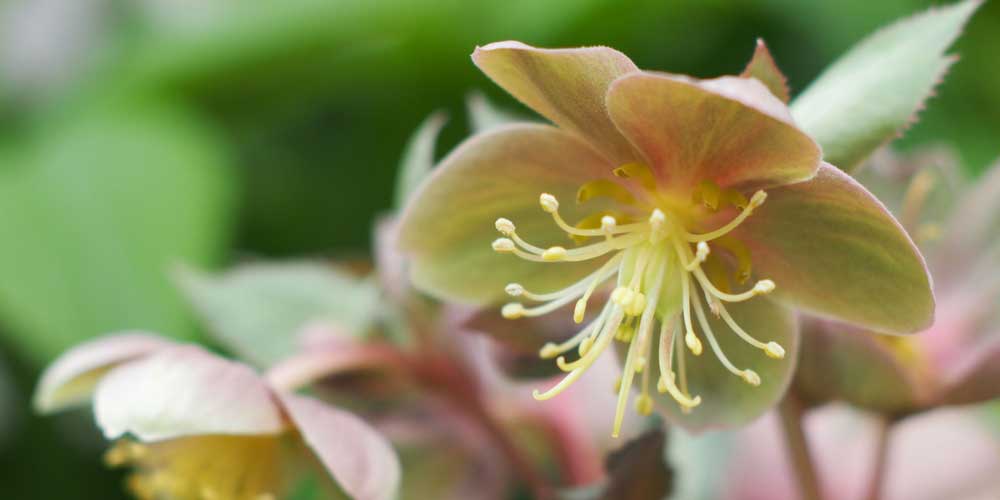 Helleborus sternii ‘Silver Star’ (photo Takashi M.)[/caption>
Helleborus sternii ‘Silver Star’ (photo Takashi M.)[/caption>
Read also
Hellebores: planting, growingFor what flowering period?
- To have flowers at Christmas
The Christmas Rose, Helleborus niger, lives up to its name quite well! When planted in good conditions, it blooms from November to March. You will enjoy its beautiful white flowers with bright yellow stamens during the festive season! However, it is a bit more delicate to grow than other species. Plant it in a shaded location, in rich, cool soil.
- To have flowers in March
If you want flowering at the end of winter, to accompany spring-flowering bulbs and perennials, choose Oriental Hellebores. They come in a wide range of colours.
You can also opt for hybrid Hellebores from the ‘Gold Collection’ ® series, for example: Helleborus ‘Pink Frost’ with its delicate pink flowers or Helleborus ‘Green Corsican’ with green – cream white flowers. These hybrids have been selected for their ornamental qualities.
The Stinking Hellebore (Helleborus foetidus) also blooms until spring, usually from January to April.
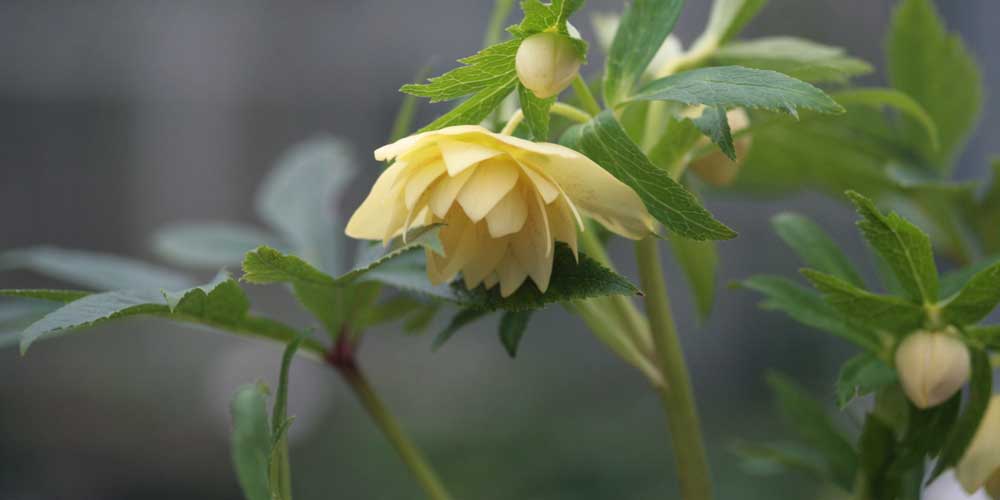
Helleborus orientalis ‘Super Double Yellow’
Discover other Helleborus - Hellebore
View all →Available in 0 sizes
Available in 0 sizes
Available in 1 sizes
Available in 2 sizes
Available in 2 sizes
Available in 2 sizes
Available in 0 sizes
Available in 1 sizes
Available in 1 sizes
Available in 1 sizes
What is the desired visual effect?
- For a colourful flowering!
To bring vitality to the garden, even in the middle of winter, plant varieties with rather bright colours! Avoid Helleborus foetidus and Helleborus argutifolius with green flowers, and opt for blooms in red, yellow, or pink shades. For instance, you can choose Helleborus orientalis guttatus Pink with pink flowers speckled with purple dots, or Helleborus x orientalis ‘Madame Lemonnier’ with its stunning pink or purple flowering. Also discover the intense red flowering of Helleborus orientalis ‘Red Lady’, or the yellow flowers speckled with purple of Helleborus orientalis Guttatus Jaune.

Helleborus ‘Madame Lemonnier’, Helleborus Guttatus Jaune and Helleborus Guttatus Pink
- For decorative foliage
Most hellebores are evergreen, so take advantage of this to choose varieties with decorative foliage! Discover the unique foliage of Helleborus x nigercors ‘Magic Leaves’, cream-white marbled green. This variety bears white flowers from January to March. It results from the cross-breeding between the Christmas Rose and the Corsican Hellebore.
Also enjoy the remarkable foliage of Helleborus ‘Anna’s Red’: when young, its leaves are bronze, veined with pink. As they age, they turn green veined with cream-white. Helleborus foetidus ‘Yellow’ has superb very light and fine foliage, and the young leaves are yellow-green, almost golden. Another interesting species is Helleborus sternii, decorative for its beautiful dark green leaves delicately veined with white. You can combine them with other plants with decorative foliage such as Heucheras, evergreen grasses, or ferns.

Helleborus ‘Magic Leaves’: flowering and foliage
- For a natural and simple look
To create a rather natural effect, choose varieties with single flowers, in white or pink colours, such as Helleborus orientalis ‘Blanc’ or Helleborus nigercors ‘Candy Love’. Their very understated flowering reminds us of that of the botanical species. Avoid varieties with bicoloured petals! You can also turn to species like Helleborus foetidus, with green flowering and beautiful finely divided foliage, or Helleborus x sternii, which bears pale green flowers at the end of winter.
- For a sophisticated look
If you want a very neat-looking bed, turn to the many varieties of Oriental Hellebores! Prefer varieties with double flowers or unusual colours, such as those with black flowers. Enjoy varieties with petals speckled with more pronounced colours (for example Helleborus orientalis Guttatus) or with petal edges highlighted by a fine border. These blooms will bring originality and elegance to your beds. We particularly recommend Helleborus orientalis ‘Double Aubergine liseré Blanc’, with petals delicately bordered in white. You can also choose varieties with original foliage, such as Helleborus x nigercors ‘Magic Leaves’.
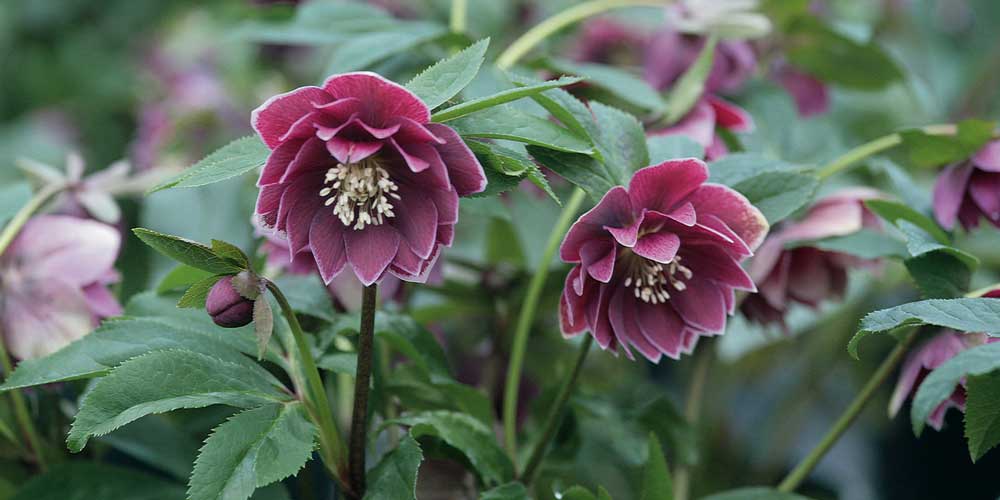 Helleborus orientalis ‘Double Aubergine Liseré Blanc'[/caption>
Helleborus orientalis ‘Double Aubergine Liseré Blanc'[/caption>
- Subscribe!
- Contents































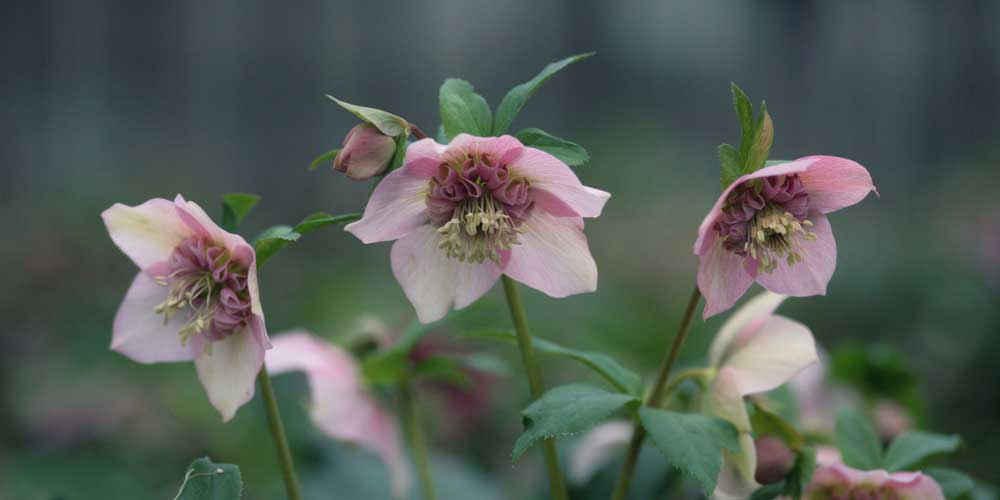
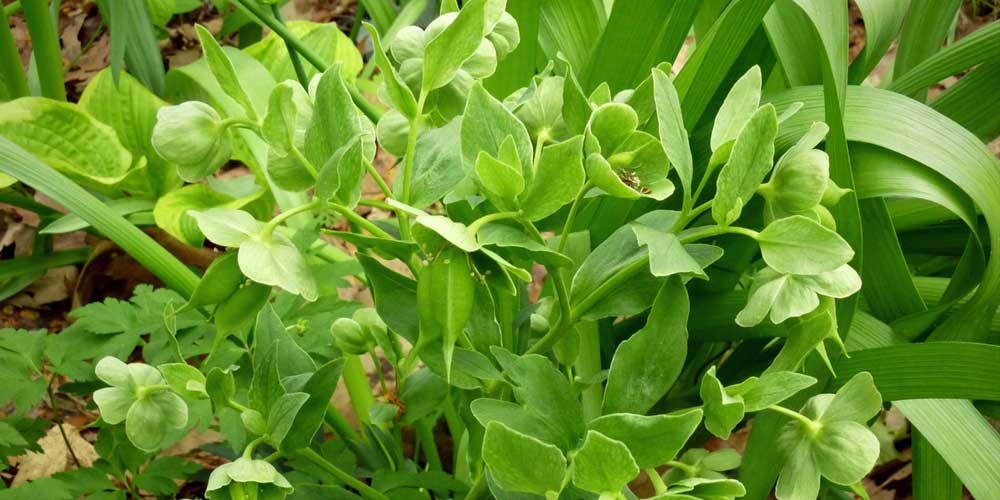
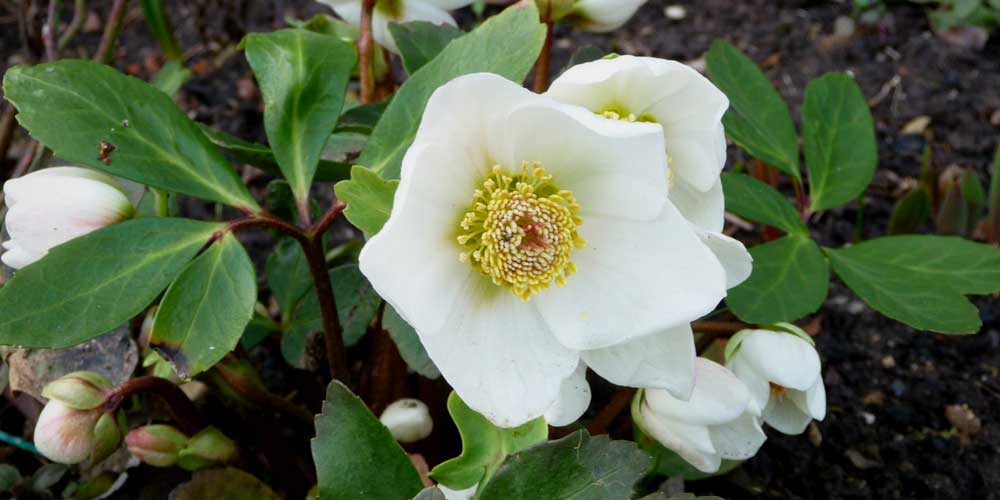

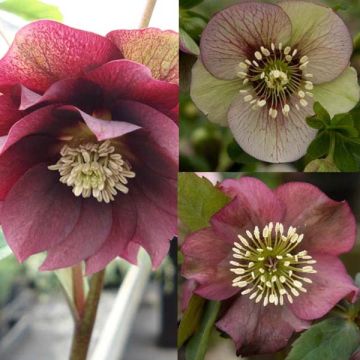
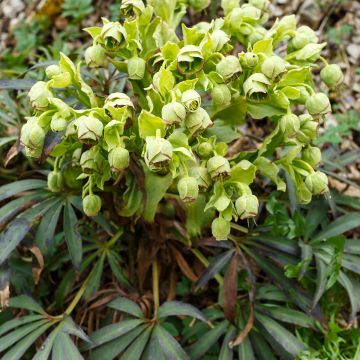
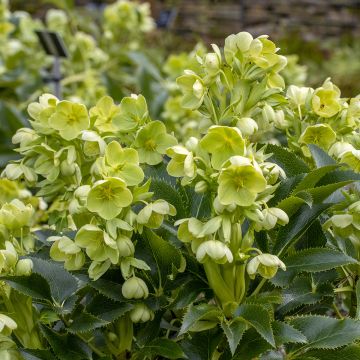
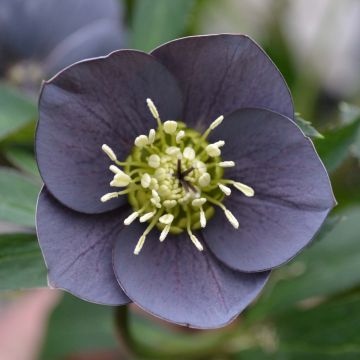
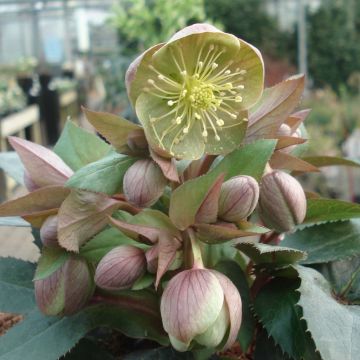
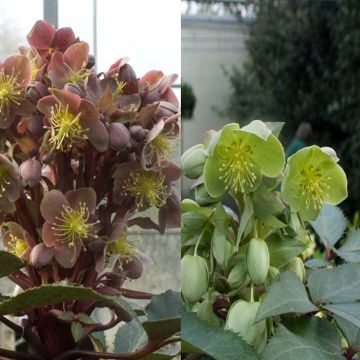

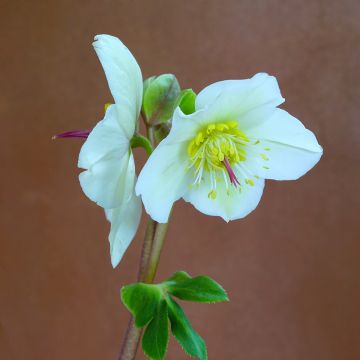
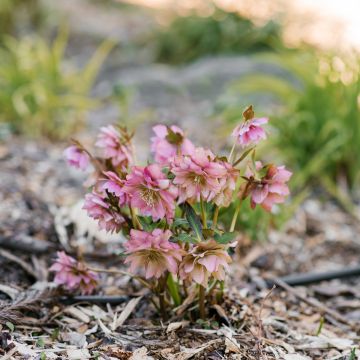
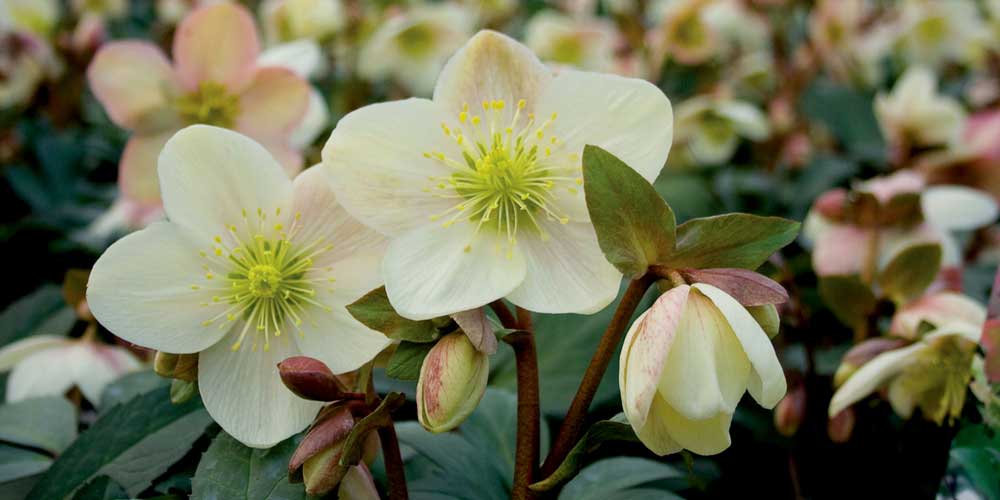
Comments